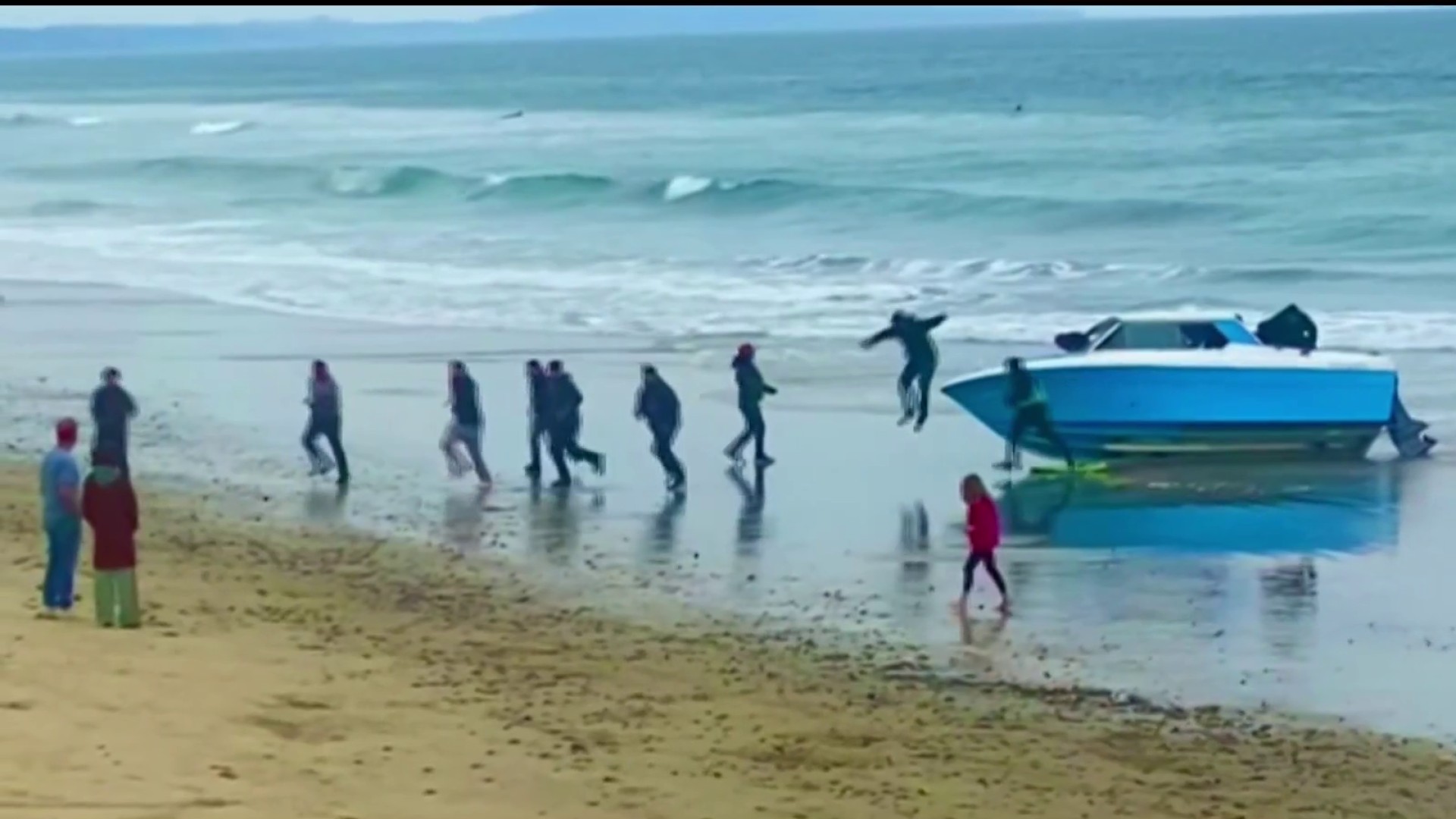San Diego's recent storms and wild weather delayed the launch of a massive replica ship under construction for the past four years, but the vessel finally hit the water on Wednesday.
The ship – a replica of Spanish explorer Juan Rodriguez Cabrillo’s 1542 flagship, San Salvador – belongs to the San Diego Maritime Museum.
Built in a parking lot easily viewed by wandering tourists and not in a traditional shipyard, the San Salvador can only be launched during specific tides and with the assistance of special equipment, which is why museum officials waited until more favorable conditions on Wednesday.
Crews transferred the San Salvador onto a self-propelled trailer, donated for the project by Marine Group Boat Works, then placed the ship onto a shallow draft barge for its trip to Marine Group’s boatyard in Chula Vista.
There, the ship will be inspected for safety. The San Salvador will remain at the boatyard until her debut Labor Day weekend at the Port of San Diego’s 2015 San Diego Festival of Sail, hosted by the Maritime Museum of San Diego, museum representative Robyn Gallant confirmed.
The Maritime Museum hopes San Salvador will kick off the festival by leading the parade into the harbor. The ship will then be ready to take her first visitors on board.
Gallant told NBC 7 a major part of the launch of this ship aims to educate the public about American history, and in particular about the origins of California.
Cabrillo was the first European explorer to make contact with the West Coast of North America and to establish a relationship with the indigenous populations. Just like the Mayflower is a symbol for early colonial development on the East Coast, so the San Salvador is for the West.
The original San Salvador was built for trade and was a three-masted ship of 200 toneladas, meaning it could carry 200 barrels of wine. With Cabrillo at the helm, it was used in his attempt to discover the wind patterns of the North Pacific and establish a route to China. While the ship did not make it to China, it was the first European ship to explore the Pacific coast of what is now the United States.
Alongside the Department of Education and the National Parks Service, the San Salvador will be used to develop curriculum for students and serve as a floating classroom to educate them about this slice of history, the museum spokesperson said.
The ship will aim to host tens of thousands of young students each year, and the educational components of the museum will focus on engaging students in the cultural, political and economic underpinnings of Cabrillo’s era of exploration.
Within the first five to 10 years of her life at sea, the San Salvador will travel to various ports up the California coast such as Oceanside, Monterey, Morro Bay and Sacramento to bring this unique classroom experience to other cities.
However, she will first be docked in the San Diego Harbor for several months before her journey to those other ports begins.
The addition of the San Salvador to the Maritime Museum will teach the public about the origins of their beloved communities and will give people an opportunity to engage with a ship that appears to be straight out of the 1500s.
Not only does the San Salvador look like the original ship, the materials and tools used to build her were true to the time period as well. Although she is fitted with modern appliances like electricity and a GPS, the majority of the ship was built with resources available to the original Cabrillo expedition, Gallant explained.
The ship matches the original in size, weighing 150 tons and measuring 92 feet long by 24 feet wide.
The replica was built at Spanish Landing in San Diego between 2011 and 2015 by the Maritime Museum of San Diego and approximately 500 volunteers. The vast majority of funds spent during construction were contributed by donors. The Port of San Diego offered use of Spanish Landing Park, allowing thousands of spectators to witness the ship’s progress.
San Diego County leaders said the ship is an important project for the city.
Local
“The San Salvador is a mighty symbol of our region’s proud maritime heritage and carries with it the dreams and hopes of generations of San Diegans,” said San Diego County Supervisor Greg Cox. “My thanks to the many volunteers who worked so hard on this project.”
“You can see the dedication in every bit of the San Salvador, from the keel to the deck,” said San Diego Mayor Kevin Faulconer. “We are thankful to the Maritime Museum for their resolve in building such a fine ship and offering it to the region as an educational opportunity for not only our children, but every San Diegan and visitor interested in exploring our origin story.”



